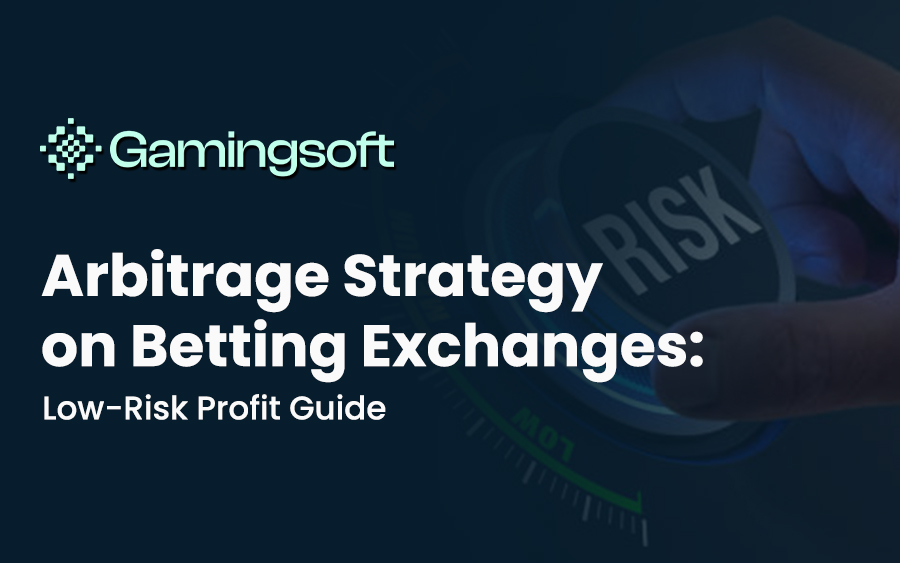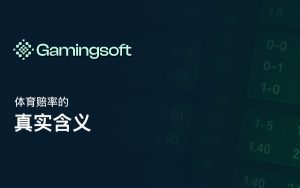Imagine making a profit from sports — no matter which team wins. Sounds impossible? That’s the idea behind arbitrage betting, often called “arbing”. In financial markets, arbitrage means exploiting price differences across exchanges. In betting, it’s the same — taking advantage of odds discrepancies between bookmakers and betting exchanges to guarantee a small but consistent profit. On platforms like Betfair Exchange, arbitrage trading has become a fine art — where precision, timing, and data turn wagering into a near risk-free investment.
In this guide, we’ll explain what betting arbitrage is, how it works on exchanges, and how both bettors and iGaming operators benefit from understanding this smart, low-risk strategy.

What Is Arbitrage Betting?
Arbitrage betting (or “arbing”) involves placing bets on all possible outcomes of an event using different odds from different sources, ensuring that no matter what happens, you make a profit.
For example:
- Bookmaker A offers 2.10 for Team A to win.
- Betting Exchange offers 2.10 for Team A not to win (lay odds).
By calculating the right stakes on each side, you can lock in a guaranteed return — even before the match starts. It’s not gambling — it’s pure math.
Why Arbitrage Works: Market Inefficiency
Bookmakers and exchanges don’t always agree on the true probability of an event.
Each platform adjusts its odds independently based on:
- Market demand
- Risk exposure
- Betting volume
- Algorithmic modeling
When odds are out of sync, a temporary arbitrage window opens.
Traders who spot it quickly can lock in small, consistent profits before the prices adjust.
These opportunities might last only seconds — which is why many professional traders use automation or API tools to detect them instantly.
Back-Lay Arbitrage Explained (Betting Exchange Version)
The most common form of arbitrage on Betfair Exchange is called Back-Lay Arbitrage.
Here’s how it works:
- Back bet: You bet for an outcome to happen.
- Lay bet: You bet against it happening.
You can place one leg on a bookmaker and the opposite leg on a betting exchange.
Let’s break this down step by step.
Example: Arsenal vs Tottenham
| Market | Outcome | Odds | Platform | Bet Type |
| Bookmaker | Arsenal to Win | 2.20 | Bookmaker A | Back |
| Exchange | Arsenal NOT to Win | 2.10 | Betfair | Lay |
You back Arsenal at 2.20 with $100 at Bookmaker A.
At the same time, you lay Arsenal at 2.10 on Betfair.
Now, let’s calculate what happens.
Scenario 1: Arsenal Win
- You win $120 total from the bookmaker (profit = $20).
- You lose your lay bet on the exchange (liability = $10).
Net Profit = $10.
Scenario 2: Arsenal Don’t Win (Draw/Lose)
- You lose your $100 back bet.
- You win $100 from your lay bet on Betfair.
Net Profit = $0 (depending on commission, still close to break-even).
That’s a simplified version — but it shows the concept: you’re covering every possible outcome.
The key lies in finding odds gaps large enough to cover commission and still leave profit.
Types of Arbitrage Opportunities
A. Bookmaker vs Exchange Arbitrage
The most common type — exploiting differences between traditional sportsbooks and exchanges like Betfair.
B. Exchange vs Exchange Arbitrage
Occurs when two betting exchanges have slightly different prices for the same market — often during live play.
C. Cross-Market Arbitrage
Advanced traders use related markets (e.g., “Over 2.5 Goals” vs “Under 2.5 Goals”) to find inefficiencies.
D. Sure Bets (Guaranteed Arbitrage)
These occur when odds are perfectly mismatched — no matter the result, one leg guarantees a return.
Sure bets are rare but gold for data-driven traders.
Example: Live Arbitrage in Action
Let’s take a real-time in-play example:
Match: Manchester City vs Chelsea
Market: Match Odds
- Bookmaker offers City to Win @ 1.90
- Exchange offers City to NOT Win (Lay) @ 2.00
You place:
- Back City @ 1.90 with $100
- Lay City @ 2.00 with $95
If City win:
- You profit $90 (from back) − $95 (liability) = −$5
If City don’t win: - You lose $100 (back) but win $95 (lay) = roughly break-even.
At first glance, no profit. But if the lay odds rise slightly — say, to 2.10 — you’ve created an instant arbitrage window.
Locking in $3–$7 per trade may sound small, but repeated across 100+ trades weekly, it compounds into a consistent edge.
Advantages of Arbitrage Trading
Low Risk
You’re covering all outcomes mathematically.
If executed correctly, losses are virtually impossible.
Scalable
Profits are small per bet, but scalable with capital, automation, and multiple accounts.
Predictable Returns
Unlike gambling, your profits come from market inefficiency — not chance.
Market Liquidity
Betting exchanges like Betfair have deep liquidity, making it possible to execute large stakes efficiently.
No Need to Predict Winners
You’re not betting on outcomes — you’re exploiting mispricing.
Disadvantages (and How to Manage Them)
1. Odds Change Quickly
Markets adjust in seconds — slow execution kills profitability.
Use auto-trading tools or Betfair API for instant response.
2. Commission Reduces Margins
Always factor in exchange commissions (usually 2–5%).
Target higher-arb percentages to offset fees.
3. Limited by Bookmakers
Bookmakers may restrict or limit accounts that consistently arb.
Use multiple accounts and mix betting behavior.
4. Human Error
Mistyped odds or miscalculated stakes can reverse the edge.
Use calculators or trading bots for precision.
5. Liquidity Risk
If a market lacks liquidity, your lay bet might not be matched.
Stick to major events (EPL, Champions League, horse racing).
How Exchanges Enable Smarter Arbitrage
Exchanges like Betfair revolutionized arbitrage by offering:
- Transparent odds driven by market forces, not fixed margins.
- Ability to lay outcomes — essential for hedging.
- Low commissions versus bookmaker spreads.
- Deep liquidity for executing large trades.
They’ve turned betting from pure speculation into a quant-driven marketplace — where traders use the same principles as financial analysts.
Smart Variations: Advanced Arbitrage Strategies
Experienced traders evolve beyond basic arbing into hybrid models:
1. Value-Arbitrage
Combines traditional value betting with arbitrage — placing bets only when long-term EV (expected value) is positive.
2. In-Play Arbitrage
Exploiting rapid odds movement during live matches — requires instant data and execution speed.
3. Cross-Sport Arbitrage
Finding pricing correlations between different sports or events (e.g., tennis sets vs match winner markets).
4. Crypto-Arbitrage (Emerging Trend)
Some operators now explore decentralized betting markets — creating opportunities between fiat and blockchain-based odds feeds.
Risk Management: Staying Sustainable
Even though arbitrage is low-risk, maintaining sustainability is crucial.
Tips:
- Keep detailed transaction logs.
- Diversify bookmakers and exchanges.
- Use small margins but repeat often.
- Stay updated on policy changes (bookmaker limits, API rules).
- Reinvest profits steadily — avoid overexposure.
Think of arbitrage not as gambling — but as portfolio management.
Conclusion
Arbitrage on betting exchanges proves that profit doesn’t always require prediction — it just requires precision. By exploiting micro-gaps between odds, traders can earn steady, low-risk returns — transforming betting into a numbers game. For beginners, arbitrage offers a safe entry into exchange trading. For professionals, it’s a foundation for advanced strategies like value betting, market-making, and AI-driven trading. And for operators, understanding arbitrage means understanding the heartbeat of modern betting exchanges — where liquidity, transparency, and technology meet.





